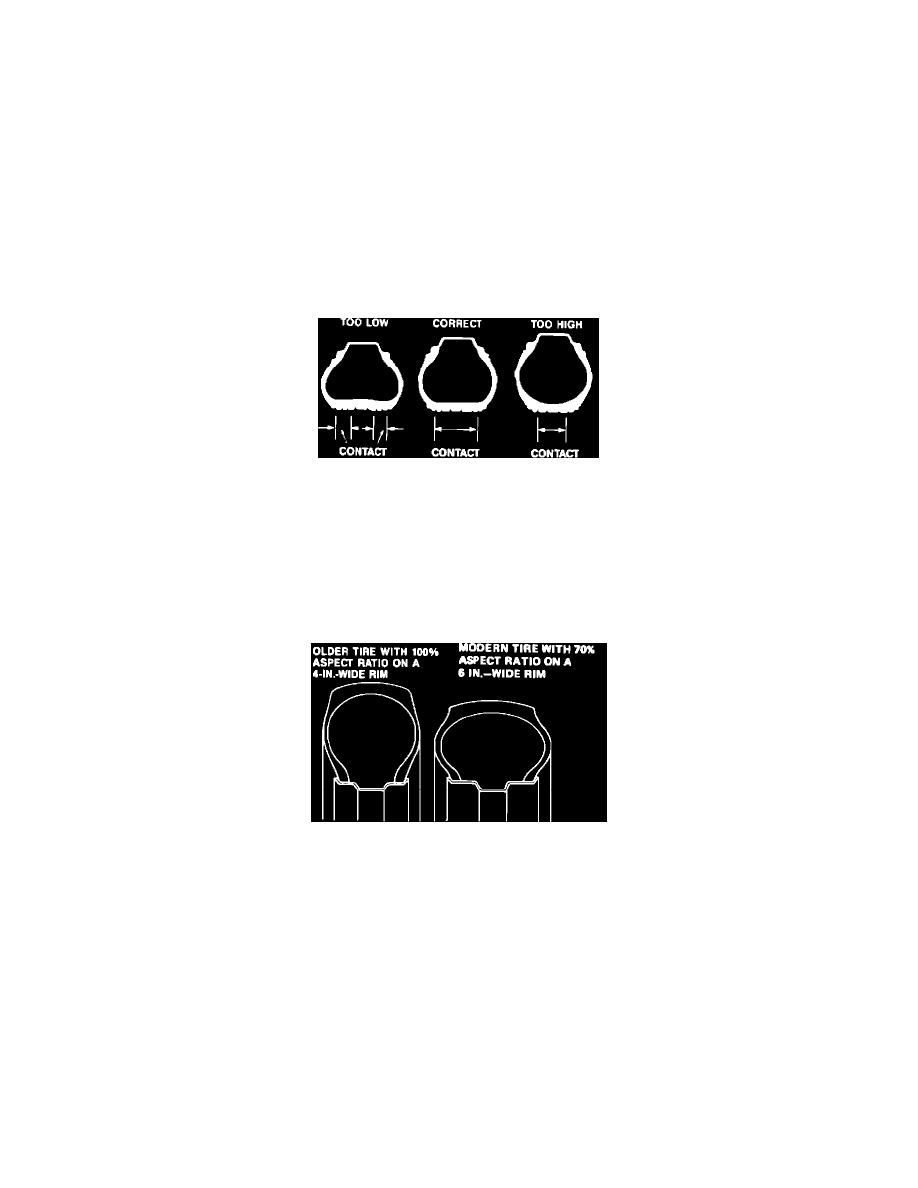Bonneville V6-231 3.8L VIN 3 SFI (1988)

Tires: All Technical Service Bulletins
Tires - Effects of Pressure
Bulletin Number:
88-3-8
Reference Number:
873502
Publish Date:
1/88
Subject:
TIRE PRESSURE
Models
Affected:
ALL
The following information, although not new, does help clarify some common tire related questions.
TIRE PRESSURE
The amount of air pressure in your tires has a definite effect on how the tires will wear, how the car handles and how much fuel it will use.
FIGURE 1
Underinflated tires may give a smooth ride, but handling and tread life will suffer.. Too little air causes the sidewalls and tread to buckle, reducing the
area of the road contact patch and causing a loss of traction, especially on curves. Refer to Figure 1.
The flexing of an underinflated tire increases fuel consumption and leads to excessive heat build-up. That can cause rapid wear and early tire failure.
Proper inflation results in maximum road contact, traction and fuel economy.
Overinflation reduces the contact area and hurts traction. Fuel economy may increase, but the ride will be harsh.
FIGURE 2
TIRE ASPECT RATIO
The ratio between the height of a tire, from wheel rim to tread, and its width, from sidewall to sidewall, is known as the aspect ratio.
At first, tires were circular tubes with 100 percent aspect ratios. It was discovered that tires handled better when mounted on a wider rim. Tires were then
made wider without increasing their height, which tended to put more tread on the road and provided better handling, better load-carrying capacity and
longer life. Today's passenger-car tires have aspect ratios ranging from 80 to 50 percent.
Profiles as low as 35 percent are used on special low-pressure racing tires.
